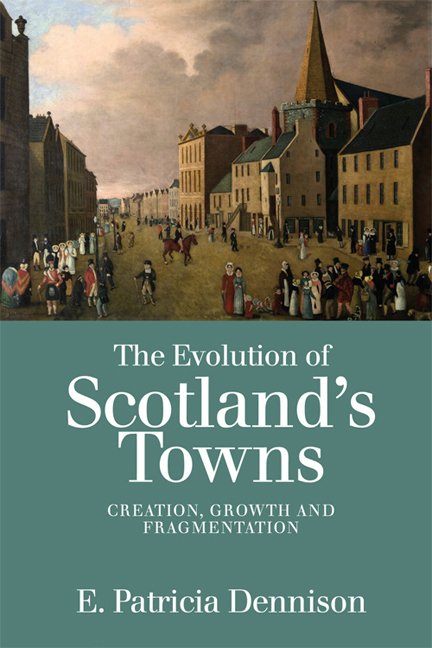Book contents
- Frontmatter
- Contents
- List of Figures
- Acknowledgements
- Image Credits
- List of Abbreviations
- Introduction
- 1 Medieval Towns
- 2 Daily Life in the Middle Ages
- 3 Medieval Faith and the Church
- 4 Encroachment on Burgh Society, 1550–1750
- 5 Man-made and Natural Disasters, 1550–1750
- 6 The Birth of Urban Scotland
- 7 The Victorian Town
- 8 The Twentieth Century
- Post-script: Footprints to Fragmentation
- Appendix: Population Statistics – A Select List
- Bibliography
- Index
8 - The Twentieth Century
Published online by Cambridge University Press: 11 November 2020
- Frontmatter
- Contents
- List of Figures
- Acknowledgements
- Image Credits
- List of Abbreviations
- Introduction
- 1 Medieval Towns
- 2 Daily Life in the Middle Ages
- 3 Medieval Faith and the Church
- 4 Encroachment on Burgh Society, 1550–1750
- 5 Man-made and Natural Disasters, 1550–1750
- 6 The Birth of Urban Scotland
- 7 The Victorian Town
- 8 The Twentieth Century
- Post-script: Footprints to Fragmentation
- Appendix: Population Statistics – A Select List
- Bibliography
- Index
Summary
The visionary thinking of Patrick Geddes and the utopian ideals of Ebenezer Howard and like-minded theorists heralded hope for the twentieth century after the harshness that nineteenth-century industrialisation had brought. That hope was short-lived. Geddes was appointed to only one town-planning commission in Scotland, that initiated by the Dunfermline Carnegie Trust in 1904 (see p. 242); the majority of his idealistic proposals were not adopted. A few streets in the town are still lined with trees, a small, fleeting acknowledgement of his great vision.
Many were in tune with the new thinking and expressed the desire to relocate, away from the slums of industrialisation and its problems of overcrowding, to a more healthy ‘green’ environment. But the reality was to be very different: this was to be a century of bitter wars, personal deprivation and economic retrenchment. Townscapes were, indeed, to be transformed and new homes would be built. But the economic and political climate would dictate the format of the urban scene. Too often, this brave new world would give not even a nod to visionary thinking.
The Garden City ideal
The Garden City was the ideal of Ebenezer Howard, a utopian view laid out in his 1898 treatise, To-morrow: A Peaceful Path to Real Reform. Howard's aim was to provide the best of the countryside alongside the advantages of city living, so as to eliminate for the twentieth century the many social evils that beset nineteenth-century towns: the benefits of cities were opportunities for work and cultural pleasures; those of the countryside were open spaces, gardens, fresh produce and the enjoyment of natural beauty. He proposed that new towns should be built on greenfield sites, with populations of no more than 30,000. They would have central parks where cultural activities might take place and be encircled by green belts. Although existing as entities, the Garden Cities would have first-rate transport to, and good communications with, other urban centres. The settlements would be economically self-sufficient, attracting industries by the facility to work and live in pleasant, healthy environments, and there would be a clear distinction between industrial and residential areas. These would be self-sustaining communities, not dormitory towns dependent on cities for employment.
- Type
- Chapter
- Information
- The Evolution of Scotland's TownsCreation, Growth and Fragmentation, pp. 247 - 290Publisher: Edinburgh University PressPrint publication year: 2017

